What is Sharadiya Navratri Festival (Meaning)?
.jpg)
Navratri, which literally translates to 'Nine Nights,' is a celebration of the nine manifestations of the Devi Adiparashakti (the Supreme Being, creator and destroyer of the elements). Even during the times of the Ramayana and Mahabharata, gods and deities observed Navratri. According to the Hindu calendar, the main Navaratri of the year occurs during the month of Ashwin during the season (Ritu) of Sharad, hence the names 'Sharad Navratri' and 'Sharadiya Navratri'. It is believed that only during this period of the year Durga descends on the earthly plane in her 9 forms to satisfy the wishes of all Her devotees. Hence, this is held as the most important, popular and celebrated Navratri of the year. The nine forms of Durga Maa and her observance are:
Shailputri Devi
represents Mother Nature
Observances: Ghatasthapana, Shailputri Puja.
Brahmacharini Devi
represents Penance and Good Conduct
Observances: Chandra Darshana, Brahmacharini Puja.
Chandraghanta Devi
represents Peace and Goodness
Observances: Sindoor Tritiya, Chandraghanta Puja.
Kushmanda Devi
represents Empowerment
Observances: Kushmanda Puja, Vinayaka Chaturthi.
Skandmata Devi
represents Salvation and Prosperity
Observances: Upang Lalita Vrat, Skandamata Puja.
Katyayani Devi
represents Fierceness
Observances: Saraswati Avahan, Katyayani Puja.
Kaalratri Devi
represents Anhilitation of Fears and Suffering
Observances: Saraswati Puja, Kalaratri Puja.
Mahagauri Devi
represents Purity, Serenity and Tranquility
Observances: Durga Ashtami, Mahagauri Puja, Sandhi Puja.
Siddhidatri Devi
represents Siddhis (accomplishments)
Observances: Maha Navami, Ayudha Puja, Navami Homa.
Navratri Parana
or the Conclusion of the nine days.
Observances: Durga Visarjan, Vijayadashami, Kanya Puja.
Sharad Navratri Tithi & Muhurat in 2025
This auspicious festival is celebrated for nine whole days with great fervor and devotion by Hindus and its festivities are also celebrated by people of various ethnicities across India. This festival is celebrated in order to worship Goddess Durga and Her nine divine forms. Each day of Navratri is dedicated to one of the nine forms of Maa Durga and prayers are offered accordingly.
| Date & Day | Puja |
| 22nd September 2025, Monday | Ghatasthapana Kalash, Shailputri Puja |
| 23rd September 2025, Tuesday | Chandra Darshana, Brahmacharini Puja |
| 24th September 2025, Wednesday | Sindoor Tritiya, Chandraghanta Puja |
| 25th September 2025, Thursday | Vinayaka Chaturthi |
| 26th September 2025, Friday | Kushmanda Puja |
| 27th September 2025, Saturday | Skandamata Puja |
| 28th September 2025, Sunday | Katyayani Puja |
| 29th September 2025, Monday | Saraswati Puja, Kalaratri Puja |
| 30th September 2025, Tuesday | Durga Ashtami, Mahagauri Puja, Sandhi Puja, Maha Navami |
| 1st October 2025, Wednesday |
Ayudha Puja, Navami Homa,
Navratri Parana, Durga Visarjan, Vijayadashami |
Ghatasthapana on Monday, September 22, 2025
Ghatasthapana Muhurat - 05:30 to 07:22
Duration - 01 Hour 52 Mins
Ghatasthapana Abhijit Muhurat - 11:10 to 11:58
Duration - 00 Hours 49 Mins
Ghatasthapana Muhurta falls on Pratipada Tithi
Pratipada Tithi Begins - 25:23+ on Sep 21, 2025
Pratipada Tithi Ends - 26:55+ on Sep 22, 2025
Significance of Sharadiya Navratri

The Bhagwat Puran and Markandey Puran each include their own version of the Navratri legends. During the battle of Ramayana, on the eighth day of the waning moon of the Ashwin month, according to the Devi Bhagvat Puran, Lord Brahma awoke the sleeping mother goddess Durga. Durga instructed how to worship her during the nine-day Navratri festival, and Lord Rama followed her instructions at Mahanavratri. On the ninth day, on Vijaya Dashami or Dussehra, he slew Ravana.
Markandey Puran's narrative is the one you are most likely to have heard. It is about the demon king Mahishasura, who was granted immortality after worshiping Brahma. As soon as he began to torment the innocent, the Gods sought Shiva's assistance. To destroy Mahisasura, the Trinity of Brahma, Vishnu, and Shiva created the female warrior, Adishakti Durga. The demon king, captivated by her beauty, proposed marriage to her. The Goddess granted the request but stipulated that Mahisasura must vanquish her in combat. The ever-proud Mahisasura accepted, and the nine-night war ensued (hence Navratri). Adishakti Durga decapitated Mahisasura at the conclusion of the ninth night, thus the name 'Mahisasura Mardini'.
Navratri commemorates the victory of good over evil, as well as how 'Shakti' was able to beat a haughty demon while the Gods of all three Lokas were afraid of the latter. A festival of dance, lights, and community, with roots in the Ramayana and Mahabharata, that celebrates a female warrior's victory over a demon and symbolizes the eradication of adversity in all its forms.
According to Hindu mythology, Lord Ram revered the holy goddess to fight and destroy the Demon King Lord Raavan. He was a symbol of good triumphing over bad. The tenth day of Maha Navratri is known as Dussehra, which is celebrated in northern India while the final Victory of Mother Durga over demon Mahisasura is celebrated with massive popular fervor in western India. Diwali, which comes next, is only celebrated after this victory has been accomplished.
Astrological Significance of Sharadiya Navratri

Shardiya Navratri plays a significant role as per Hindu Astrology. Since the first Navratri of the year, the Magha Gupt Navratri which happens during the zodiac sign of Aquarius, which relates to projects, it is during Shardiya Navratri which occurs under the productive sign of Scorpio that these come to fruition, indeed this is the harvest period and marks the start of the upcoming winter season.
What to do in Sharad Navratri?

Sharad Navratri begins on the first day of Ashwin and concludes on the tenth day of Ashwin. This festival is celebrated with great devotion to Maa Durga. The festivities include the worship of nine goddesses during Navratri, stage decorations, the recital of the legend, live dramas and reenactments of the plot, and the chanting of Hindu scriptures. The nine days are also an important time for crop harvesting, followed by cultural events, pandal design competitions, and stage decoration. People enjoy visiting these pandals, where daily pujas are performed until Dashmi.
In addition to pandal-hopping, people enjoy classical music and folk dances, among other activities. On the final day, known as Vijayadashami or Dussehra, the statues are submerged in a body of water like a river or ocean. The statue representing evil is burned with fireworks, signifying death. Twenty days after Sharad Navratri, Diwali, or the Festival of Lights, one of the most popular and widely celebrated holidays, commences.
During Navratri, people perform rituals in their homes or temples dedicated to various incarnations of Goddess Durga. The Navratri rituals are accompanied by mantra chanting, bhajan recitals, and shloka recitals for nine days.
Sharadiya Navratri Durga Puja Vidhi (Procedure)
.jpg)
During Navratri, people do Durga Puja, which is a sixteen-step (Shodashopachara) manner of worshipping Goddess Durga.
Dhyana and Avahana, or meditation and invocation, mark the start of the puja. Goddess Durga is invited by repeating the mantra and doing the Avahan Mudra.
Then come Asana (providing a sitting), Padya Prakshalana (cleaning feet), and Arghya Samarpan (providing fragrant water).
To cleanse the god, Achamana is presented first, then Snana (bath) and Vastra (offering of garments).
Abhushana (jewelry), Chandan (sandalwood), Roli (kumkum), and Kajal are then offered.
Offerings made at Mangal Dravyarpana include rice (Akshata), Sugandhita Dravya (scent), Haridra (turmeric), and Saubhagya Sutra (thread for fortune).
Flowers (Pushpanjali) and Bilvapatra are presented first, then incense (Dhoop), food (Naivedya), fruits (Rituphala), coconut (Nikela), and betel leaves (Tambula).
Gifts, or dakshina, are given to the Goddess both before and after Kanya Pujan.
Nirajan (aarti), Pradakshina (circumambulation), and Kshamapan (asking for forgiveness for faults) mark the conclusion of the ceremony.
Reciting the Durga Saptashati, a sacred book detailing Goddess Durga's heavenly conquest and signifying the victory of good over evil, is a means for followers to get blessings.
Ghatasthapana Puja

Ghatasthapana is one of the significant rituals during Navratri. It marks the beginning of 9 days festivity. Our scriptures have well defined rules and guidelines to perform Ghatasthapana during a certain period of time at the beginning of Navratri. Ghatasthapana is invocation of Goddess Shakti and doing it wrong time, as our scriptures forewarn, might bring wrath of the Goddess Shakti. Ghatasthapana is prohibited during Amavasya and nighttime.
The most auspicious or Shubh time to do Ghatasthapana is first one third of the day while Pratipada is prevailing. If due to some reasons this time is not available, then Ghatasthapana can be done during Abhijit Muhurta. It is advised to avoid Nakshatra Chitra and Vaidhriti Yoga during Ghatasthapana but those are not prohibited. The most important factor to consider is that Ghatasthapana is done before Hindu midday while Pratipada is prevailing. Invoke Goddess Durga and request Her to accept your prayers and to oblige you by residing in the Kalash for nine days.
Kanya Pujan

Traditionally Kanya Pujan is performed on Ashtami or Navami Tithi during Navratri. It is a very significant part of Navratri rituals. During Kanya Pujan 8 young girls (under the age of 11 Years) & 1 young boy (represents Batuk Bhairav Protector of all Shaktipeethas) are invited into the Native’s Home.
Kanya Puja Rituals Vidhi
Wash the feet of the young girls as a sign of respect
Apply Tilak to their foreheads
Tye a Kalawa (Raksha Sutra) on their right-hand wrists
Offer Prasad of Halwa, Puri & Chana (prepared in Sattvic Style without Onion & Garlic) to the Young Children
Give them gifts like Bangles, Notebooks, Pens, New Clothes & Money
Touch the Young Girls feet to seek the blessings of the Divine Shakti Goddess
Make the Young Children sit on a pedestal and then perform Aarti, offer Incense & Chant Durga Aarti Mantras
This is very prominent ritual in Northern Part of India. Usually, Devotees observe a fast while performing these rituals and break their fast after all the rituals are completed. This is said to please the Divine Shakti Durga Goddess.
Sharadiya Navratri Vrat (Fasting)
.jpg)
During Navratris, Hindu devotees keep fasting for nine days to please and seek blessings of Goddess Durga. There can be variation in the number of fasting days. While many observe the fasts for all nine days, there are some devotees who keep fasting in jodas (couple) - the first two or the last two days of the Navratri.
Navratri fasts have many variations too. Some people take only water during these nine days, while some eat fruits, and some people eat one meal a day. However, most people observe Falphari Upvas or Fast. Kuttu Ki Puri, Singhade Ka Halwa, Singhare Ke Pakore, Sabudana Vada and Sabudana Khichdi are some of the popular Navratri food recipes.
Here are all the fasting rules you should know and what you can eat:
Flour and Grains
Regular grains like wheat and rice are not allowed during Navratri fasting. You should eat Kuttu ka Atta (buckwheat flour) or Singhare ka Atta (water chestnut flour) or Rajgira ka Atta (amaranth flour) during Navratri fastings. Samai Ke Chawal or Samvat Ke Chwaal (barnyard millet) to replace rice in making khichdi, dhoklas or kheer. Sabudana is another staple food during Navratri that can be used in making kheer, vadas and papads.
Fruits
You can eat all types of fruits during Navratri fasting. Some devotees fast only fruits and milk for all these nine days.
Spices and Herbs
Normal table salt are not consumed during Navratris. Use an alternative rock salt or sendha namak for cooking during Navratri. In spices, you can use cumin or cumin powder, black pepper powder, green cardamom, cloves, cinnamon, ajwain, black peppercorns, dry pomegranate seeds, kokum, tamarind and nutmeg. Some people also use fresh coriander leaves, red chili powder, dry mango powder, chaat masala etc.
Vegetables

During Navratri fasting, most of the people consume vegetables like - potatoes, sweet potato, arbi, kachalu, suran or yam, lemons, raw or semi-ripe pumpkin, raw pumpkin, spinach, tomatoes, bottle gourd, cucumber, carrots etc.
Milk and dairy products
Milk and dairy products like curd, paneer or cottage cheese, white butter, ghee, malai, and preparations with milk and khoya are mostly consumed during Navratri fasting.
Food not to eat during Navratri:
All fast food, canned food, and foods prepared using onion or garlic should be avoided. Devotees who are keeping Navratri fasts should also avoid consuming legumes, lentils, rice flour, corn flour, all-purpose flour, whole wheat flour and semolina (rava). Non-vegetarian food, eggs, alcohol, smoking and aerated drinks are also a strict no-no.
Navratri Associated Products & Services
9 Mukhi Rudraksha

The 9 Mukhi Rudraksha is ruled by the divine Mother. Goddess Durga rules the rare nine Mukhi Rudraksha bead which hold the powers of all nine goddesses known as Nava Durga. The 9 Mukhi Rudraksha offers worldly comforts and fulfils desires known as Bhogha and offers liberation meaning Moksha to the wearer. Buy 9 Mukhi Rudraksha to receive the divine power of Shakti this Navratri.
Gomed Stone

Buy Gomed Stone on the holy festival of Navratri
Hessonites have been prized as jewels for over 5000 years. Gomed stone or Hessonite is a gemstone known for its sparkling brown and reddish tones and use in beautiful jewelry. It is a powerful stone that bestows power, renown, political and social success, protection, and financial wealth. It is also well-known for destroying hidden foes and unseen negative energy in the environment.
Durga Puja

Powerful Goddess Durga Pujas conducted by our team of qualified Pandits complete with all Vedic rituals to revere Divine Mother Goddess and seek blessings of Protection, Power, Courage, Good Health, Prosperity, Wisdom, Spiritual Augmentation, relief from malefic effects of Planet Rahu, fulfillment of material and other desires. Book the Puja to receive blessings of Maa Durga in Navratri.
Durga Yantra

Durga Yantra bestows wealth and property and protects the person from all sorts of dangers. According to Adhayaya 4 Sloka 17 of Durga Saptashati (most powerful and potent collection of mantras dedicated to Goddess Durga created from Markandeya Puran), worshipping of this Yantra helps remove poverty. Receive strength and power, triumph over obstacles, and total supremacy over one's enemies during Navratri.
Durga Idols

Goddess Durga represents power, victory, determination, energy and positive energies that destroys and protects from all negative energies. Keeping Durga idol/s at home or workplace during Navratri brings an abundance of divine power and blessings.
Kanya Pujan

Kanya Pujan is observed on the eighth or ninth day of Navratri, known as 'Ashtami' or 'Navami,' and it involves the worship of young girls as forms of Goddess Durga. Book kanya Pujan on the auspicious day of Ashtami or Maha Navami of Navratri.

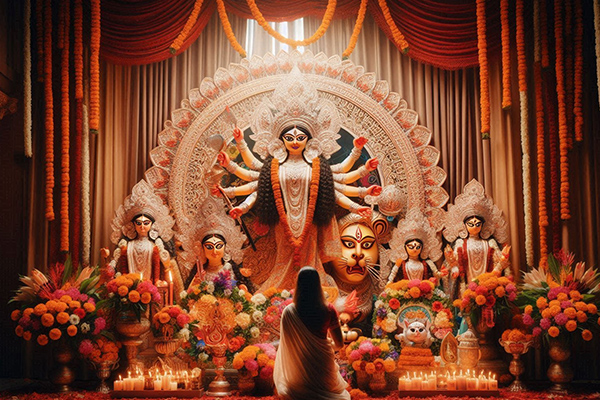



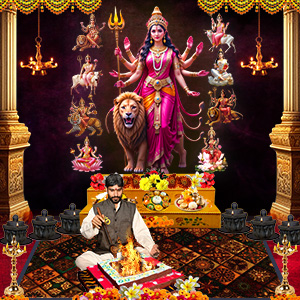
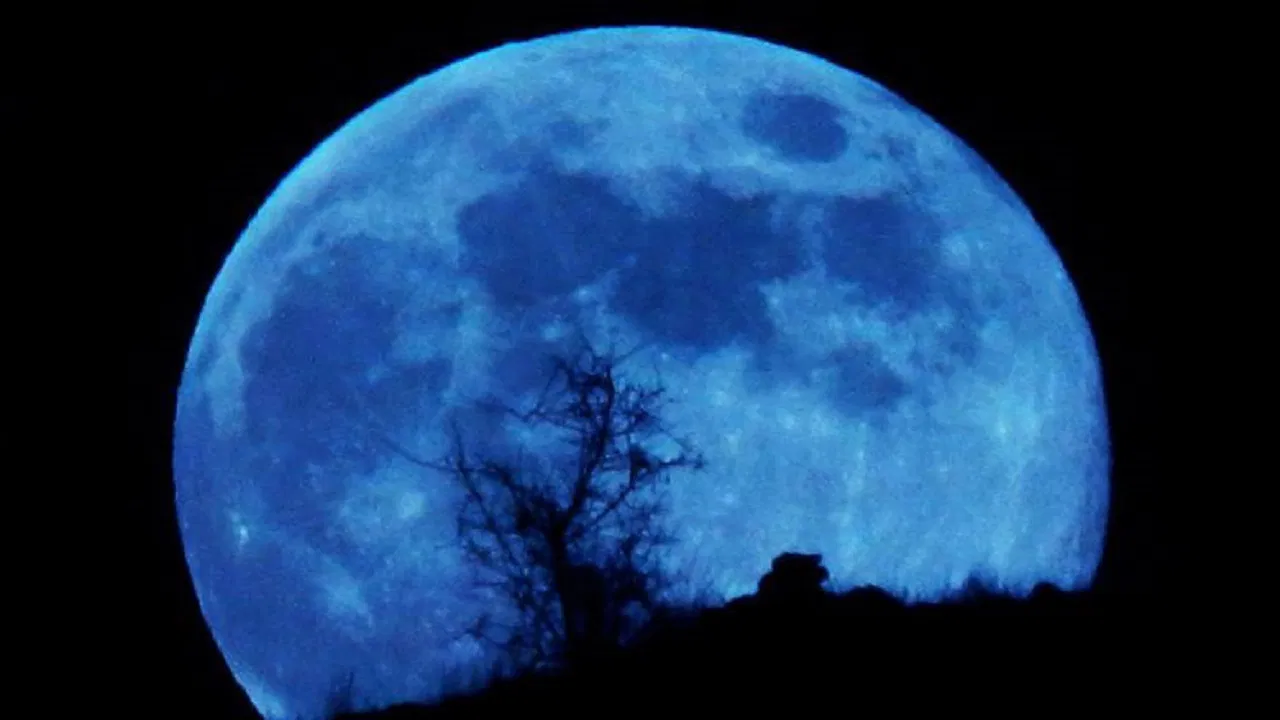
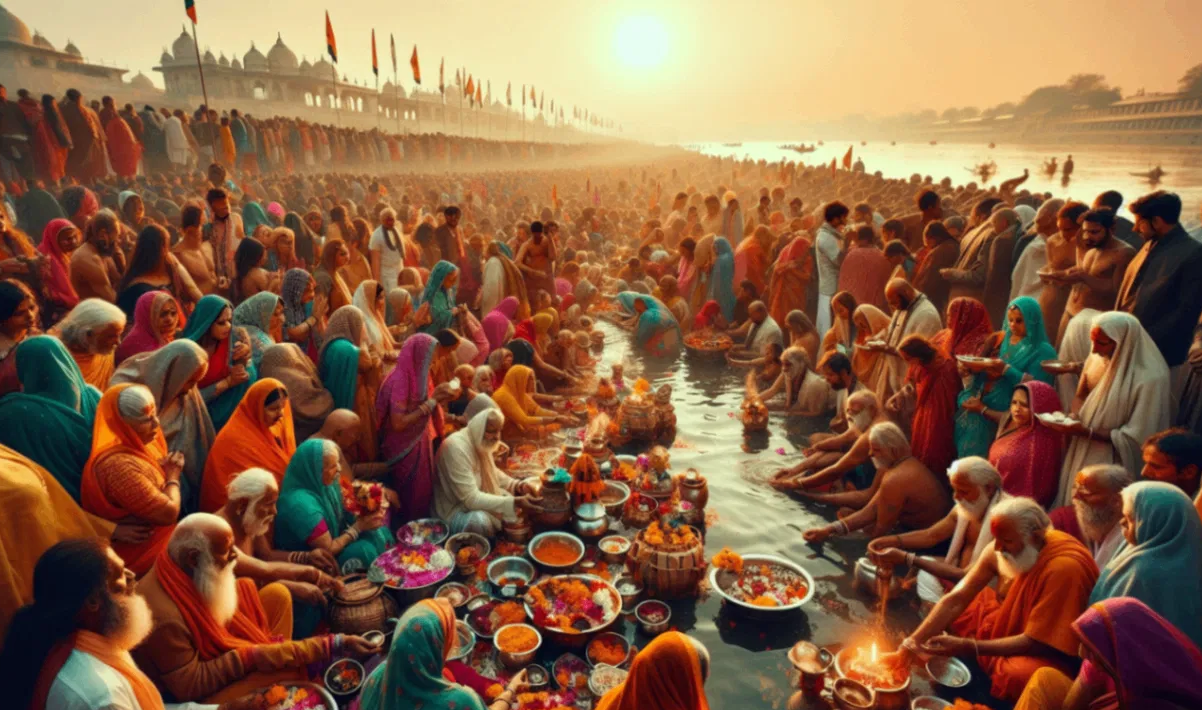
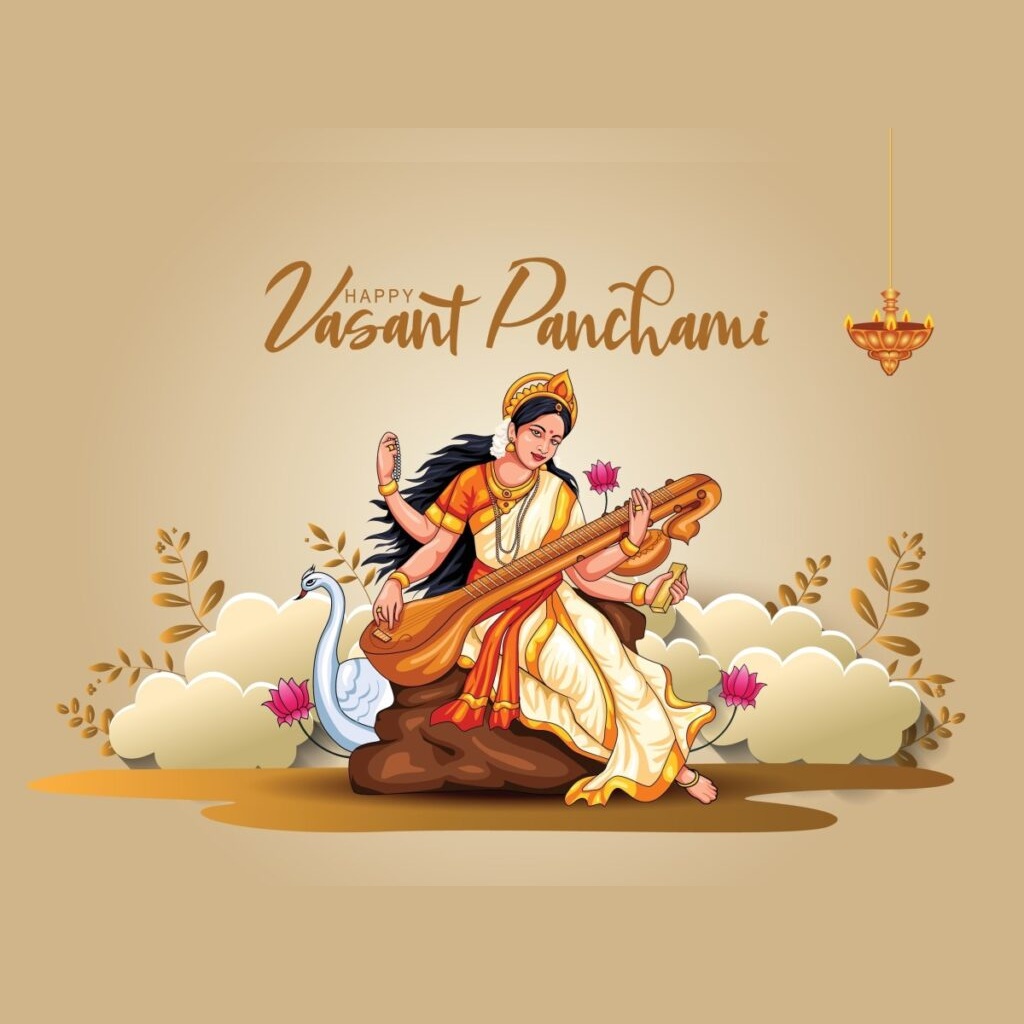
Comments 0
Leave your thought here